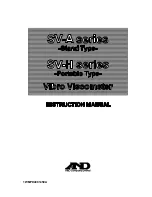
TF1100-EH transit-time handheld flowmeter manual
2
1.5 USER FRIENDLY
The TF1100-EH features the ease of operation, high accuracy and outstanding reliability,
while the software provides a very user friendly interface and much more functions. It
employs a patent balanced lower voltage multi-pulse igniting circuit which increases the
anti-interference ability magnificently so that the flow meter will work properly even in
demanding industrial environments such as those with power frequency transmitter working
nearby. The signal receiving circuits feature self-adapting performance so as to ensure that
the user can easily operate the instrument without any adjustment. The built-in rechargeable
Ni-H battery can work continuously for more than 12 hours without recharge.
1.6 PRINCIPLE OF MEASUREMENT
The TF1100-EH ultrasonic flow meter is designed to measure the fluid velocity of liquid
within a closed conduit. The transducers are a non-contacting, clamp-on type, which will
provide benefits of non-fouling operation and easy installation.
The TF1100-EH transit time flow meter utilizes two transducers that function as both
ultrasonic transmitters and receivers. The transducers are clamped on the outside of a closed
pipe at a specific distance from each other. The transducers can be mounted in V-method
where the sound transverses the pipe twice, or W-method where the sound transverses the
pipe four times, or in Z-method where the transducers are mounted on opposite sides of the
pipe and the sound crosses the pipe once. This selection of the mounting method depends on
pipe and liquid characteristics. The flow meter operates by alternately transmitting and
receiving a frequency modulated burst of sound energy between the two transducers and
measuring the transit time that it takes for sound to travel between the two transducers. The
difference between the transit-time is directly and exactly related to the velocity of the liquid
in the pipe, as shown in Figure 1.
Where:
f
V
Liquid velocity
K
Constant
dt
Difference in time of flight
TL
Average Transit Time
/
f
V
Kdt TL
=
Figure 1






































